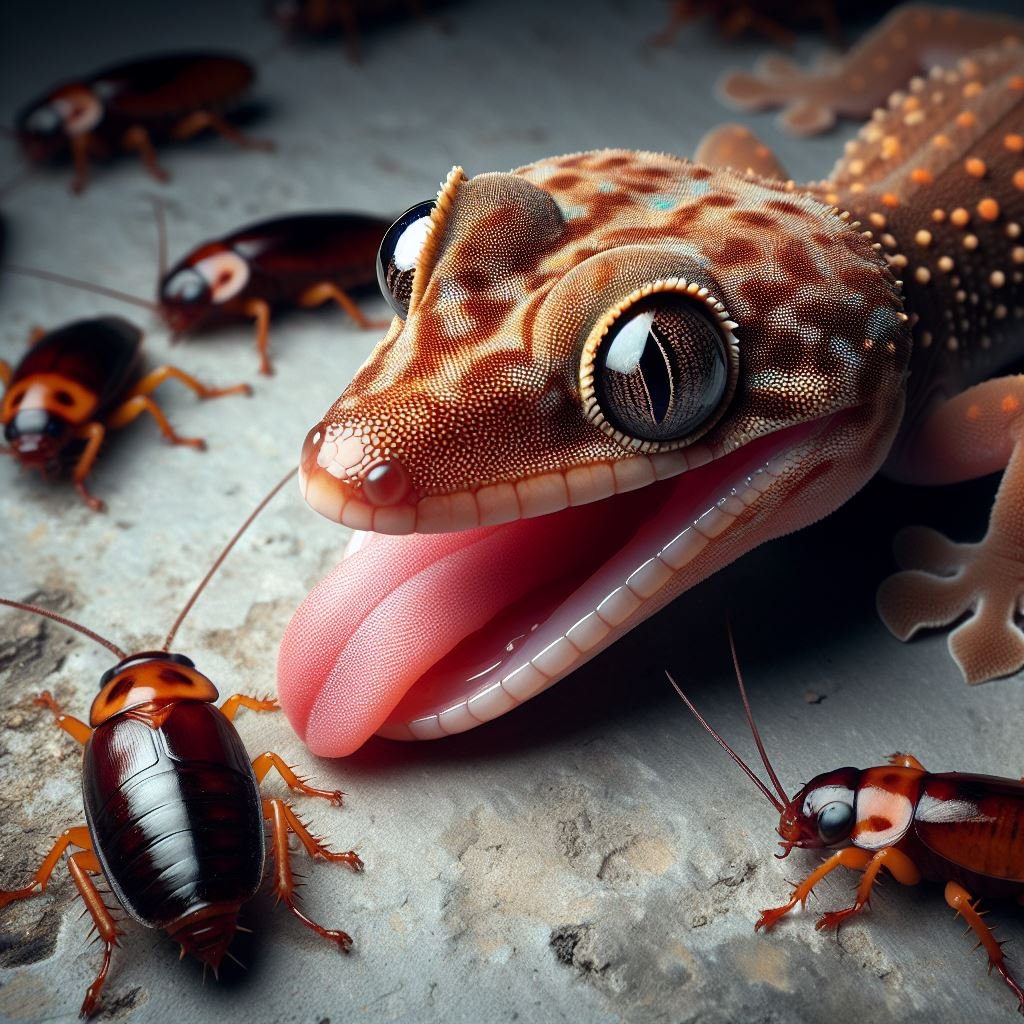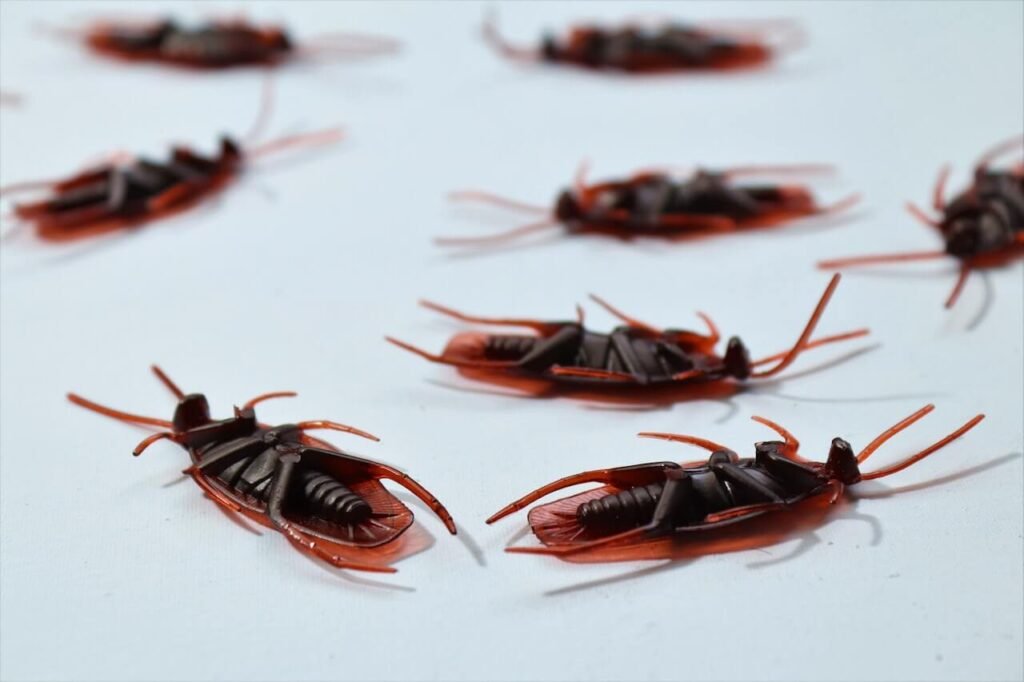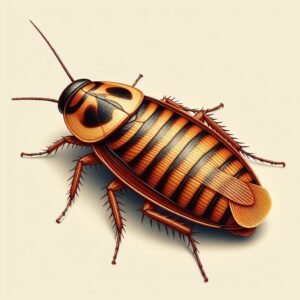What eats cockroaches? Insects like ants, beetles, and centipedes, as well as spiders, reptiles such as geckos, amphibians like certain frogs, birds including chickens, and mammals like mice and cats, eat cockroaches
Cockroaches – the creepy crawlers we all love to hate. Just catching a glimpse of one of these quick-moving insects can make your skin crawl.
Roaches may be repulsive, but they play an important role in decomposition and the food chain. Understanding natural cockroach predators can help control populations. This article will uncover the most common animals that feast on roaches and provide crucial tips to prevent infestations in your home.
What are Cockroaches?
Cockroaches belong to the insect order Blattodea, which contains over 4,500 species worldwide. Most roaches have an oval, flattened body and long antennae. They range in size from tiny to terrifyingly large over 4 inches long.
Two types commonly invade buildings – the German cockroach, roughly half an inch long, and the American cockroach reaching over 2 inches.
Roaches are largely nocturnal and prefer warm environments with access to food and water. They can reproduce rapidly, with females producing egg capsules containing up to 40 offspring.
While roaches themselves don’t pose threats to human health, they can transmit bacteria like Salmonella and E. coli by walking over contaminated surfaces. Clearly, you don’t want them inhabiting your home. Luckily, many animals relish roaches on the menu. Let’s look at the most voracious cockroach consumers in nature.

What Eats Cockroaches?
Natural Predators That Feast on Cockroaches
Lizards, birds, amphibians, spiders, insects, and some mammals all include cockroaches in their natural diets. These creatures help regulate wild roach populations and can also eliminate residential infestations when they gain indoor access.
1. Lizards That Catch Cockroaches
Numerous lizard species prey on cockroaches. Fast runners like skinks and whip-tailed lizards actively pursue their roach meals. Chameleons use stealth ambush tactics, while big iguanas munch the largest roaches with ease.
Gecko lizards employ stalk and pounce techniques to snag roaches. The aptly named Tokay gecko, native to Asia, is particularly fond of feasting on large cockroaches. Its loud vocalizations sound like “To-kay!”
If small lizards find their way into your house, consider letting them stay to help clean up roaches. Non-native lizards should get safely removed, however. Ensure crawl spaces allow native lizards outdoor access while blocking pest entry.
2. Toads and Frogs That Feast on Cockroaches
Warty amphibians like toads and frogs thrive on a diet of insects – cockroaches included. Toads wait quietly for prey to pass by then shoot out their long tongues to capture roaches with sticky saliva.
Certain toads emit toxic secretions from skin glands that can kill cockroaches when ingested. Tree frogs use their oversized eyes to spot and pounce on roaches from above.
If you have a backyard pond or water feature, encourage native frogs and toads by providing aquatic plants and hiding places. Just beware, heavy use of insecticides can be toxic to amphibians. Allow nature’s roach assassins to flourish safely.
3. Birds That Catch and Eat Cockroaches
While not all birds prey on roaches, many common urban species like crows, starlings, mockingbirds, and flycatchers certainly do. Birds employ sight and sound to track down crawling and flying roaches.
Crows exhibit problem-solving intelligence using tools to extract hiding roaches. Flycatchers snatch roaches mid-flight behind buildings and streetlights.
Attract insect-loving birds with plants that provide seeds and berries. Add a water source like a birdbath or fountain. Birds need some trees or shrubs for perching to hunt roaches on the ground. Just be sure outdoor lighting doesn’t enable roaches taking refuge from airborne predators.
4. Spiders That Feast on Cockroaches
Many spiders will entrap and eat any insect they can overpower, including roaches. Some species like brown widow spiders actively hunt for cockroaches and can eliminate 70% of roaches in and around buildings. The brown widow produces sticky webs and venom that paralyze roaches so they can be hauled back to the spider’s lair for consumption.
Wolf spiders also chase down roach nymphs and adults. Jumping spiders pounce assertively using their excellent eyesight. Both wandering spiders and trapdoor spiders capture unwary roaches that pass by their hiding places. Support your helpful house spiders by leaving their webs undisturbed.
5. Insects and Centipedes That Prey on Cockroaches
Various predatory insects and centipedes play their part in controlling cockroach populations. Feisty centipedes hunt roaches with their venomous fangs leaving victims paralyzed.
Ground beetles attack roaches on foot while tiger beetles chase them at high speed. Ants swarm and skeletonize roaches with potent acid secretions. Wasps paralyze roaches to feed their larvae back in the nest.
Also read Smokybrown Cockroach: 10 Interesting Facts And Control Tips
Ensure garden spaces contain woody debris and native plants that shelter these beneficial roach predators. Avoid broad-spectrum insecticides that can inadvertently wipe out the bugs that eat cockroaches. Sticky traps draw in and capture specific roach-hunting insects.

Tips to Control Cockroaches Without Harming Natural Predators
While nature provides excellent roach regulation services, additional steps must be taken to prevent infestations inside homes. Use these 10 tips to make your property inhospitable to resilient cockroaches without harming helpful natural predators in the environment.
Eliminate indoor moisture sources – Fix any leaky pipes, clean up standing water, repair rain gutters, and use dehumidifiers to keep indoor humidity below 50%. Roaches need moisture to survive.
Store food properly – Keep all human and pet food sealed tightly in pest-proof containers to deny roaches access. Clean up any spills promptly.
Limit clutter and hiding spots – Get rid of accumulated papers, debris, stacks of materials that allow roaches to reproduce secretly.
Vacuum and sweep frequently – Through cleaning removes bits of food and dead skin roaches feed on. Clean under appliances, furniture, and in corners.
Take out the trash regularly – Securely tie garbage bags and empty bins frequently so contents don’t overflow. Outdoor cans should have tight fitting lids.
Install screens on all vents and drains – Cockroaches easily enter buildings through plumbing openings. Screens block access while allowing airflow.
Apply boric acid powder – This abrasive desiccant damages the waxy roach exoskeleton leading to dehydration. Focus on hidden crevices and voids.
Monitor with sticky traps – Traps draw roaches in then glue them in place for easy disposal. Check often to gauge infestation hotspots.
Keep insecticide baits out of reach – Baits contain poisons that workers transport back to nesting sites. Avoid using sprays which scatter communities.
Seal all possible entries – Caulk and seal gaps around pipes and wires. Weather strip doors. Screen vent openings. Eliminate access from outdoor populations.
Conclusion
By understanding the diverse species that consider cockroaches a primary food source, we gain insight into natural control methods. Promoting these predators through habitat enhancements reduces reliance on toxic chemicals.
Sensible prevention also restricts invasion opportunities. Finally, monitoring provides crucial data to target control efforts and determine effectiveness. Achieving a sustainable balance allows us to coexist with nature’s lawnmowers on the ground and in the air effectively.




